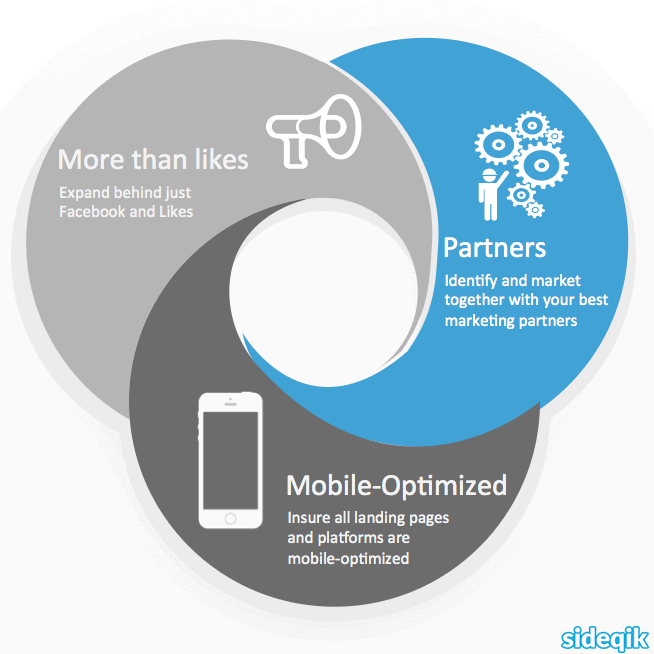Pros and Cons of Servant Leadership: A Comprehensive Analysis for Modern Leaders
Leadership styles are evolving to meet the needs of diverse teams and dynamic markets. One approach that has gained traction is servant leadership, which flips the traditional hierarchy on its head. Instead of leaders prioritizing their own goals, servant leaders focus on serving their teams, fostering an environment of collaboration and growth. However, it is important to recognize that this style is not new; it has existed throughout human history, only gaining a specific name in the 1970s. This style has its pros and cons, and understanding them is crucial for modern leaders looking to implement this philosophy effectively.
Key Takeaways
-
Servant leadership prioritizes the needs of team members, which can boost morale and engagement.
-
It fosters trust and loyalty, leading to stronger team dynamics and collaboration.
-
Challenges include potential delays in decision-making and resistance from traditional leadership structures.
-
Implementing servant leadership may require significant cultural shifts within organizations.
-
Measuring the impact of servant leadership can be complex, but it often correlates with improved employee satisfaction and organizational performance.
Understanding Servant Leadership
Defining Servant Leadership
Servant leadership flips the traditional leadership model on its head. Instead of leaders focusing on accumulating power and directing subordinates, they prioritize serving the needs of their team. The core idea is that by supporting and developing team members, leaders can achieve better results and create a more positive work environment. This approach requires a shift in mindset, where the leader’s primary goal is to enable the growth and well-being of others. But how is servant leadership a paradox? It seems counter-intuitive that leading by serving can be effective, yet its impact on morale and productivity speaks for itself.
Historical Context and Evolution
The concept of servant leadership isn’t new, though it gained prominence in the late 20th century. Robert K. Greenleaf is often credited with popularizing the term in his 1977 essay, “The Servant as Leader.” However, the principles behind it can be traced back to ancient philosophies and religious teachings. Over time, the understanding of servant leadership has evolved, adapting to different organizational structures and cultural contexts. Today, it’s seen as a viable alternative to traditional hierarchical models, especially in organizations that value collaboration and innovation. You can see the differences between bosses and leaders in many organizations.
Key Characteristics of Servant Leaders
Servant leaders exhibit a unique set of qualities that set them apart. These include:
-
Listening: Paying close attention to what others have to say, both verbally and nonverbally.
-
Empathy: Understanding and sharing the feelings of others.
-
Healing: Fostering emotional and spiritual well-being.
-
Awareness: Possessing a strong understanding of ethical and societal issues.
-
Persuasion: Building consensus through influence rather than authority.
-
Conceptualization: Thinking beyond day-to-day tasks to see the bigger picture.
-
Foresight: Anticipating future trends and challenges.
-
Stewardship: Taking responsibility for the well-being of the organization and its resources.
-
Commitment to the growth of people: Investing in the development of team members.
-
Building community: Creating a sense of belonging and shared purpose.
It’s important to note that servant leadership is a situationally based approach. While these characteristics are generally beneficial, their application may vary depending on the specific context and the needs of the team. Understanding servant leadership strengths and weaknesses is key to successful implementation.
Servant leadership isn’t about being a pushover. It’s about empowering others to reach their full potential. It requires a delicate balance of humility and assertiveness, service and leadership. The goal is to create a culture where everyone feels valued, respected, and motivated to contribute their best work.
Benefits of Servant Leadership
Enhanced Team Morale
Servant leadership often leads to a noticeable boost in team morale. When leaders prioritize the needs of their team, it creates a supportive and appreciative environment. This, in turn, fosters a sense of value and belonging among team members. Employees feel heard and respected, which directly translates into higher job satisfaction and a more positive attitude towards their work. This positive atmosphere can also reduce stress and burnout, leading to a more engaged and productive workforce. It’s a win-win, really.
Increased Trust and Loyalty
Trust is the bedrock of any successful team, and servant leadership excels at building it. By consistently demonstrating integrity, empathy, and a genuine concern for their team’s well-being, servant leaders cultivate deep trust. Loyalty naturally follows. When employees trust their leader, they are more likely to be committed to the organization’s goals and willing to go the extra mile. This reduces employee turnover and creates a more stable and reliable workforce. It’s hard to overstate the importance of trust in a team dynamic.
Empowerment and Development Opportunities
Servant leaders actively seek to empower their team members. They provide the resources, support, and autonomy needed for individuals to grow and develop their skills. This includes offering training opportunities, mentorship programs, and chances to take on new challenges. When employees feel that their leader is invested in their growth, they are more likely to be motivated and engaged. This not only benefits the individual but also strengthens the overall capabilities of the team. It’s about creating a culture of continuous learning and improvement. Consider the benefits of servant leadership in fostering a positive work environment.
Servant leadership isn’t just about being nice; it’s about strategically investing in your people. By prioritizing their growth and well-being, you’re building a stronger, more resilient, and more innovative organization. It’s a long-term strategy that pays dividends in terms of employee engagement, productivity, and overall success. Understanding what are the pros and cons of servant leadership style is key to effective implementation.
Challenges of Implementing Servant Leadership
Potential for Slower Decision-Making
Servant leadership emphasizes collaboration and consensus, which, while beneficial for team morale, can sometimes lead to slower decision-making processes. This is because gathering input from everyone and ensuring all voices are heard takes time. In fast-paced environments where quick decisions are needed, this can be a significant drawback. Efficiency might suffer as a result.
-
Extensive consultation delays.
-
Difficulty in urgent situations.
-
Risk of analysis paralysis.
It’s important to recognize that while inclusivity is a strength, it can also be a bottleneck if not managed effectively. Leaders need to find a balance between seeking input and making timely decisions.
Navigating Hierarchical Structures
Traditional hierarchical structures can present a challenge to servant leadership. The core tenet of servant leadership is to distribute power and decision-making, which can clash with established top-down management styles. Overcoming this resistance requires a cultural shift and a willingness from upper management to embrace a more collaborative approach. It’s not always easy to change the way things have always been done. This is one of the key servant leadership challenges.
-
Resistance from middle management.
-
Difficulty in gaining buy-in from senior leaders.
-
Potential for role ambiguity.
Resistance from Traditional Leadership Models
One of the biggest hurdles in implementing servant leadership is resistance from leaders accustomed to traditional, authoritarian models. Some leaders may view servant leadership as weak or ineffective, fearing a loss of control. Overcoming this resistance requires demonstrating the tangible benefits of servant leadership, such as increased employee engagement and improved team performance. It’s about showing, not just telling.
-
Skepticism about its effectiveness.
-
Fear of losing authority.
-
Difficulty in adapting to a new style.
Servant Leadership in Modern Organizations
Case Studies of Successful Implementation
Servant leadership isn’t just a nice idea; it’s a practical approach that’s working in real companies. Let’s look at some examples. One company, let’s call them “TechForward,” completely revamped its management structure to prioritize employee development. They saw a huge jump in innovation and employee satisfaction. Another, “CareFirst,” a healthcare provider, focused on building trust through servant leadership, which led to better patient care and reduced staff turnover. These aren’t isolated incidents; they show how servant leadership can drive tangible results. It’s about more than just being nice; it’s about creating an environment where people can thrive and achieve business outcomes.
Impact on Organizational Culture
Servant leadership reshapes organizational culture. It shifts the focus from top-down control to collaborative empowerment. This creates a culture of trust, where employees feel valued and heard. When leaders prioritize the needs of their team, it fosters a sense of community and shared purpose. This, in turn, leads to increased engagement, reduced conflict, and a more positive work environment. It’s not just about changing policies; it’s about changing the way people interact and relate to each other.
Alignment with Corporate Social Responsibility
Servant leadership naturally aligns with corporate social responsibility (CSR). When organizations prioritize serving their employees, it often extends to serving the wider community. Companies with servant leaders are more likely to engage in ethical and sustainable practices. This isn’t just about PR; it’s about a genuine commitment to making a positive impact on the world. Servant leadership provides a framework for integrating CSR into the core values and operations of the organization.
Servant leadership isn’t just about internal dynamics; it’s about creating a ripple effect that extends to customers, communities, and the planet. It’s about building organizations that are not only profitable but also purpose-driven.
Here are some ways servant leadership supports CSR:
-
Ethical decision-making
-
Community engagement
-
Sustainable practices
Critiques of Servant Leadership
Perceptions of Weakness
One of the main cons of servant leadership is the perception of weakness. Some critics argue that a servant leader’s focus on serving others can be misinterpreted as a lack of authority or decisiveness. This can be especially problematic in fast-paced or high-pressure environments where quick decisions are needed. CEOs might worry that acting like a humble servant will make them seem indecisive in the competitive business world.
Misinterpretations of Servanthood
Servant leadership can be easily misunderstood. It’s not about being a doormat or sacrificing everything for your team. It’s about empowering them to succeed. Some people might claim to be servant leaders but act more like dictators, which is hypocritical. The term “servant” can also be misconstrued, with some people thinking it implies a subservient or slave-like role. It’s important to remember that servant leadership is a mindset, not a position.
Concerns Over Profitability
Some argue that servant leadership is not compatible with short-term profit maximization. The focus on employee development and well-being might be seen as a distraction from the bottom line.
While servant leadership can lead to long-term gains, some organizations may prioritize immediate financial results. This can create tension between the principles of servant leadership and the demands of shareholders or investors. It’s important to note when servant leadership does not work.
Here’s a quick look at some potential financial impacts:
|
Metric |
Potential Impact |
|---|---|
|
Short-term Profits |
May see a slight dip initially |
|
Employee Retention |
Increased, reducing hiring and training costs |
|
Long-term Growth |
Potential for sustainable and ethical profitability |
It’s also worth noting that servant leadership may not be effective in large hierarchies or in cultures with a high power distance. In these environments, the emphasis on equality and empowerment might clash with existing norms and expectations. To learn more, consider joining a community of leaders to discuss these challenges.
The Role of Empathy in Servant Leadership
Building Stronger Relationships
Empathy forms the bedrock of strong relationships in servant leadership. It’s more than just understanding what someone is going through; it’s about feeling it with them. This connection builds trust and rapport, making team members feel valued and understood. When people feel heard, they’re more likely to collaborate and support each other. It’s about creating a space where vulnerability is seen as a strength, not a weakness. This approach helps in achieving organizational goals.
Fostering Open Communication
Empathy directly impacts communication. When leaders show empathy, it encourages open and honest dialogue. People are more willing to share their ideas, concerns, and feedback without fear of judgment. This creates a culture of transparency where problems can be addressed quickly and effectively. It also means leaders are better equipped to understand the nuances of communication, picking up on unspoken cues and emotions.
Consider these points:
-
Active listening becomes a priority.
-
Feedback is given with compassion and understanding.
-
Conflict resolution is approached with a focus on finding mutually beneficial solutions.
Enhancing Employee Engagement
Employee engagement soars when empathy is present. People want to work for leaders who care about them as individuals, not just as cogs in a machine. When employees feel understood and supported, they’re more motivated, productive, and loyal. This leads to lower turnover rates and a more positive work environment overall.
Empathy isn’t just a nice-to-have; it’s a must-have for servant leaders. It’s the key to unlocking potential, building strong teams, and creating a workplace where everyone feels valued and empowered. It transforms the work environment into a place where people want to be, not just have to be.
Servant Leadership vs. Traditional Leadership
Contrasting Leadership Styles
Traditional leadership often emphasizes a top-down approach, where leaders dictate terms and expect obedience. Think of it as a hierarchical pyramid, with power concentrated at the top. Servant leadership flips this model. It prioritizes the needs of team members, fostering a collaborative environment. The leader’s role shifts to supporting and empowering their team, not commanding them. It’s about enabling success, not exerting control. This leadership approach fosters collaboration and empowerment.
Power Dynamics and Authority
In traditional leadership, authority stems from position and title. Power is a tool to enforce compliance. Servant leaders, however, derive authority from trust and respect. They use their influence to guide and mentor, not to control. Power is seen as a way to improve service, benefiting the team and organization. Servant leaders understand that true authority is earned, not given.
Long-Term vs. Short-Term Focus
Traditional leadership often fixates on short-term gains and immediate results. The pressure to meet quarterly targets can overshadow long-term sustainability. Servant leadership, on the other hand, prioritizes long-term growth and development. It recognizes that investing in people yields greater returns over time. This means focusing on building skills, fostering innovation, and creating a culture of continuous improvement. Servant leadership distinguishes itself by emphasizing long-term momentum over short-term results.
Servant leadership puts people development ahead of short-term profits because it recognizes a fundamental truth: organizations can’t grow beyond the capacity of their people. Every company hits this ceiling eventually. Servant-led organizations break through it.
Here’s a quick comparison:
|
Feature |
Traditional Leadership |
Servant Leadership |
|---|---|---|
|
Focus |
Short-term results |
Long-term growth |
|
Authority |
Position |
Trust |
|
Power Dynamic |
Top-down |
Collaborative |
|
Employee View |
Resource |
Asset |
|
Decision Making |
Centralized |
Decentralized |
Developing Servant Leadership Skills
It’s not enough to just know about servant leadership; you have to actively develop the skills. It’s like learning to ride a bike – reading about it won’t get you anywhere until you hop on and start pedaling. Here’s how to get started.
Training and Development Programs
Formal training programs offer a structured way to learn and practice servant leadership. These programs often include:
-
Workshops: Interactive sessions focused on specific skills like active listening and empathy.
-
Seminars: Presentations and discussions on the principles of servant leadership.
-
Certification Programs: More in-depth courses that provide a recognized credential.
Look for programs that emphasize experiential learning and provide opportunities for feedback. Theory is important, but practice is where the real growth happens.
Self-Assessment and Reflection
Understanding your strengths and weaknesses is key to becoming a better servant leader. Self-assessment tools can help you identify areas where you excel and areas where you need improvement. Reflection involves taking time to think about your actions and their impact on others. Consider these questions:
-
What motivates my decisions?
-
How do my actions affect my team?
-
Am I truly serving others, or am I seeking personal gain?
Regular reflection, perhaps through journaling or meditation, can deepen your self-awareness and guide your development. It’s about understanding leadership and how you can embody it.
Mentorship and Coaching Opportunities
Learning from experienced servant leaders can accelerate your growth. Mentors can provide guidance, support, and feedback based on their own experiences. Coaching focuses on helping you achieve specific goals and overcome challenges. Look for opportunities to:
-
Shadow a servant leader: Observe their interactions and decision-making processes.
-
Seek feedback from trusted colleagues: Ask for honest assessments of your leadership style.
-
Engage a leadership coach: Work one-on-one to develop specific skills and strategies.
Mentorship and coaching provide invaluable support and accountability as you develop your servant leadership skills.
Measuring the Impact of Servant Leadership
It’s one thing to talk about servant leadership, but how do you know if it’s actually working? Measuring the impact requires a deliberate approach, focusing on both qualitative and quantitative data. The key is to identify metrics that reflect the core principles of servant leadership: growth, empowerment, and service to others.
Key Performance Indicators
Traditional KPIs can be adapted to reflect servant leadership’s influence. Consider these:
-
Employee Retention Rate: A higher retention rate often indicates greater job satisfaction and loyalty, both hallmarks of servant leadership.
-
Customer Satisfaction Scores: Empowered and engaged employees are more likely to provide excellent customer service, boosting satisfaction scores.
-
Team Performance Metrics: Track improvements in team productivity, innovation, and problem-solving abilities. This shows how servant leadership behaviors can affect the team.
-
Project Success Rates: Measure the percentage of projects completed on time, within budget, and to the required specifications. This can reflect the effectiveness of servant leaders in removing obstacles and supporting their teams.
Employee Satisfaction Surveys
Go beyond generic satisfaction surveys. Tailor questions to assess specific aspects of servant leadership:
-
Perceived Support: Do employees feel supported by their leaders in their professional development?
-
Empowerment Levels: Do employees feel empowered to make decisions and take ownership of their work?
-
Trust in Leadership: Do employees trust their leaders to act in their best interests?
-
Open Communication: Do employees feel comfortable sharing ideas and concerns with their leaders?
It’s important to use a mix of open-ended and closed-ended questions to gather both quantitative data and qualitative insights. Anonymous surveys can encourage honest feedback.
Organizational Performance Metrics
Servant leadership’s impact should ultimately be reflected in the organization’s bottom line. Look at these metrics:
-
Profitability: While not the primary focus, servant leadership can lead to increased profitability through improved employee engagement and productivity.
-
Innovation Rate: A culture of empowerment and trust can foster innovation, leading to new products, services, and processes.
-
Market Share: Increased customer satisfaction and innovation can translate into a larger market share.
-
Employee Absenteeism: Track the rate of employee absenteeism, as lower rates can indicate higher job satisfaction and engagement. This is a good way to measure employee engagement.
It’s important to remember that measuring the impact of servant leadership is an ongoing process. Regularly collect and analyze data, and be prepared to adjust your approach as needed.
Future Trends in Servant Leadership
Adapting to Remote Work Environments
Remote work is here to stay, and servant leadership must adapt. Leaders need to be even more intentional about building trust and connection when teams are distributed. This means:
-
Actively seeking input from all team members, regardless of location.
-
Using technology to facilitate communication and collaboration.
-
Being flexible and understanding of individual circumstances.
The key is to create a virtual environment where employees feel supported, valued, and empowered, just as they would in a physical office. This requires a shift in mindset and a willingness to experiment with new approaches.
Integrating Technology and Servant Leadership
Technology can be a powerful tool for servant leaders. Think about how AI can handle routine tasks, freeing up leaders to focus on people development. Consider:
-
Using data analytics to identify employee needs and challenges.
-
Implementing platforms for feedback and recognition.
-
Creating online learning resources to support professional growth.
The Rise of Conscious Capitalism
Conscious capitalism and servant leadership go hand in hand. Businesses are increasingly expected to prioritize purpose over profit. This means:
-
Focusing on creating value for all stakeholders, not just shareholders.
-
Operating with transparency and integrity.
-
Aligning values with social and environmental responsibility.
Servant leadership is well-positioned to thrive in this environment, as it emphasizes ethical behavior and a commitment to serving the greater good. It’s about building a business that not only succeeds financially but also makes a positive impact on the world. This shift towards conscious capitalism reinforces the importance of ethical behavior in leadership.
Actionable Strategies for Leaders
Implementing Servant Leadership Practices
To start using servant leadership, begin with small, manageable steps. Start by actively listening to your team’s concerns and ideas. This shows you value their input.
-
Schedule regular one-on-one meetings to understand individual needs.
-
Ask for feedback on your leadership style and be open to criticism.
-
Delegate tasks to empower team members and foster their growth.
Servant leadership isn’t about being soft; it’s about strategically prioritizing the needs of your team to achieve better results. It’s a shift in mindset, not a complete overhaul of your leadership style.
Creating a Supportive Environment
A supportive environment is key for servant leadership to thrive. It requires trust, open communication, and a commitment to employee well-being. Leaders should champion employee well-being and psychological safety.
-
Encourage collaboration and teamwork.
-
Recognize and reward both individual and team achievements.
-
Provide resources and training for professional development.
Encouraging Feedback and Continuous Improvement
Feedback is essential for growth. Create a culture where feedback is welcomed and acted upon. This helps leaders refine their approach and teams to improve their performance.
-
Implement regular feedback sessions (360-degree reviews).
-
Actively solicit feedback on decisions and processes.
-
Use feedback to identify areas for improvement and implement changes.
As a leader, it’s important to take action and make a difference. Start by setting clear goals for your team and encouraging open communication. Remember, your actions can inspire others to do their best. For more tips and resources, visit our website and discover how you can lead effectively!
Final Thoughts on The Pros and Cons of Servant Leadership
In wrapping up, servant leadership stands out as a refreshing approach in today’s fast-paced business world. It’s not just about being nice or soft; it’s about genuinely caring for your team and putting their needs first. Sure, there are challenges—like slower decision-making and the risk of being seen as weak. But the benefits, like stronger trust and better morale, can really pay off in the long run. If you’re a leader thinking about this style, consider starting small. Listen more, empower your team, and watch how it transforms your workplace. Embrace the idea that leadership is about serving others, and you might just find that your organization thrives in ways you never expected.
Frequently Asked Questions
What is servant leadership?
Servant leadership is a way of leading where the leader focuses on helping their team members succeed. Instead of just giving orders, they support and empower their employees.
What are the main benefits of servant leadership?
Some benefits include better team spirit, more trust among team members, and opportunities for personal growth and development.
What challenges might leaders face when using servant leadership?
Leaders may find it takes longer to make decisions and might face pushback from traditional leadership styles that focus on authority.
How does servant leadership affect company culture?
It can create a positive work environment where employees feel valued and motivated, leading to better overall performance.
Are there any criticisms of servant leadership?
Yes, some people think it can seem weak or that it might not focus enough on profits, which can be a concern in competitive markets.
How can empathy play a role in servant leadership?
Empathy helps leaders build strong relationships with their team, encouraging open communication and boosting employee engagement.
How does servant leadership differ from traditional leadership?
Traditional leadership often focuses on authority and control, while servant leadership prioritizes serving others and fostering their growth.
What are some ways to develop servant leadership skills?
Leaders can participate in training programs, reflect on their leadership style, and seek mentorship to improve their servant leadership abilities.
















